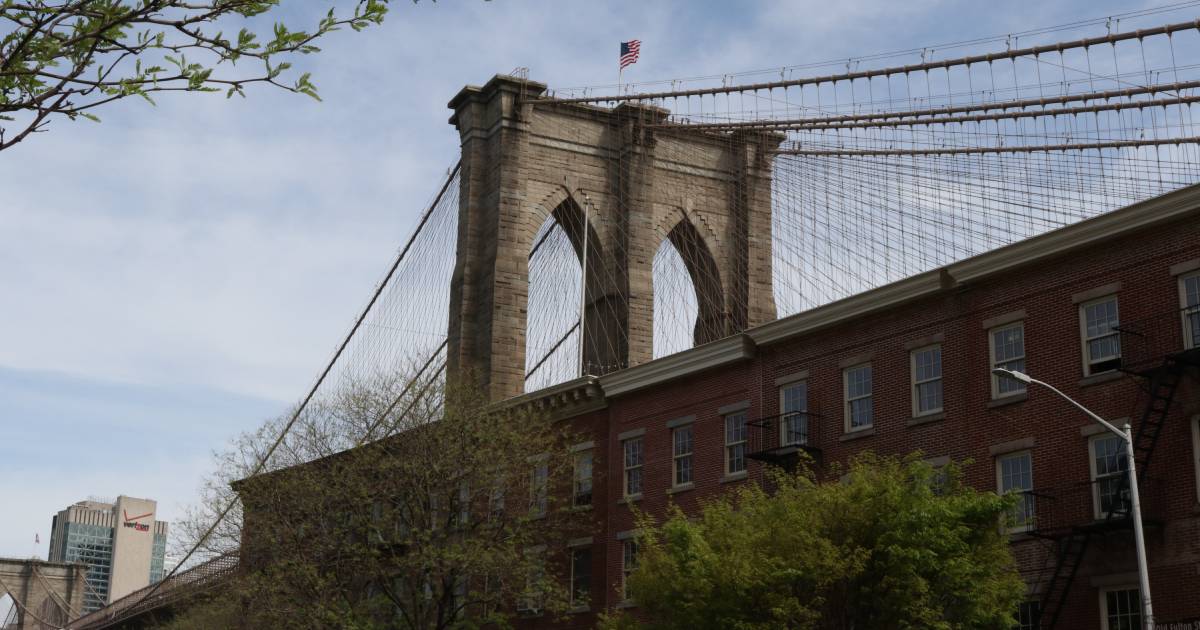On February 3rd, President Trump signed an executive order, marking the President’s first official step towards his plan to scale back on financial regulations. Presidential Executive Order on Core Principles for Regulating the United States Financial System, signed 3 Feb 2017. The order directs the Secretary of the Treasury and the Financial Stability Oversight Council (FSOC) to conduct a comprehensive review of current financial industry rules and regulations, including a review of the Dodd-Frank Act of 2010, which, among other things, created the Consumer Financial Protection Bureau (CFPB). Dodd-Frank Wall Street Reform and Consumer Protection Act, codified at 124 Stat. 1376 (2010). This executive order jeopardizes the future of the Dodd-Frank Act and the CFPB.
The Dodd-Frank Act, a law enacted during the Obama administration in response to the 2008 financial crisis, increased the number of regulations in the financial services industry. The Trump Administration has vocally opposed Dodd-Frank and the CFPB, criticizing that they fail to “address the causes of the financial crisis.” Press Briefing by Press Secretary Sean Spicer (3 Feb 2017), available at https://www.whitehouse.gov/the-press-office/2017/02/03/press-briefing-press-secretary-sean-spicer-232017-8. Press Secretary Sean Spicer called the Dodd-Frank Act a “disastrous policy” as he unveiled the executive order. Id. The order directs the Secretary of the Treasury and the FSOC to identify rules and regulations that are a detriment to economic growth, and to report findings to the President within 120 days.
What does the Executive Order do?
While a complete overhaul of the financial regulatory system was a major campaign promise of Trump, the signed Executive Order does not offer much clarification on the Administration’s plan of attack. Besides ordering a review of regulations, the order itself does not eliminate, suspend, or otherwise alter any current financial agency, rule, or regulation. Rather, the order outlines seven broad “core principles” that create the guiding framework for the Administration’s attempt to restructure the financial regulatory system.
The seven “core principles” in the Executive Order mirrors language in the Financial CHOICE Act of 2016, a bill first introduced by chairman of the House Financial Services Committee, Rep. Jeb Hensarling (R-Texas), last September. 2016 H.R. 5983 (introduced 9 Sept 2016). According to a recent Bloomberg report, Hensarling plans to reintroduce a version of this bill to the floor “as soon as this week.” Steven T. Dennis and Elizabeth Dexheimer, Trump’s Dodd-Frank Do-Over Diverted to Slow Lane With Obamacare, Bloomberg Politics (7 Feb 2017), available at https://www.bloomberg.com/politics/articles/2017-02-07/trump-s-dodd-frank-do-over-diverted-to-slow-lane-with-obamacare. This bill, if passed, would repeal key provisions of the Dodd-Frank Act—including the “Volcker Rule” (which restricts banks from making certain speculative investments) and the “Durbin Amendment” (which limits the fees that may be charged to retailers for debit card processing). See the “Volcker Rule” at 12 U.S.C. § 1851 and the “Durbin Rule” at § 1075.
The Future of the Consumer Financial Protection Bureau
The creation of the Consumer Financial Protection Bureau (CFPB) was one of the most contentious and widely debated reforms under the Dodd-Frank Act of 2010, and President Trump’s Executive Order has paved the way to dismantle the CFPB’s current structure and authority. Congressional Republicans have plans in the works to convert the CFPB into an executive commission, with authority and structure similar to the Securities and Exchange Commission or the Commodity Futures Trading Commission. Norbert Michel, The CFPB Is In The Crosshairs, Exactly Where It Belongs, Forbes, 24 Jan 2017, available at http://www.forbes.com/sites/norbertmichel/2017/01/24/the-cfpb-is-in-the-crosshairs-exactly-where-it-belongs/#4284afec4b2a. For instance, under Rep. Hensarling’s CHOICE Act, the Consumer Financial Protection Act of 2010 would be amended by replacing the single CFPB director with a bipartisan commission. As such, the CFPB would then be subject to the congressional appropriations process, expanded judicial review, and additional congressional oversight. This would limit the CFPB’s authority to take action against entities for abusive practices. See 2016 H.R. 5983.
Besides the legislature, the CFPB has been under attack in the judiciary as well. In October 2016, the D.C. Circuit issued a unanimous decision in PHH Corp., et al. v Consumer Financial Protection Board, 831 F.3d 1, on petition for review of an order of the Consumer Financial Protection Bureau (2016), ruling that the CFPB’s single-director-removable-only-for-cause structure is unconstitutional. The Court remedied this constitutional defect by eliminating the removal-only-for-cause provision from the Dodd-Frank Act. Since this ruling, the director of the CFPB is now subject to the supervision by the President, and the President now has the power to terminate the director without cause. Id.
Also at risk is the future of the current director of the CFPB, Richard Cordray. Cordray, former Ohio Attorney General, has eighteen months left on his term as director, but the likelihood of him completing this term is not assuring. While Trump’s aides have not stated a desire to fire Cordray, Republicans have been vocally calling for the President to fire the director. Just this week, Sen. Ben Sasse called for the firing of Cordray, and openly criticized the CFPB for “snowballing power into one big, unaccountable bureaucracy.” Ben Sasse, Op-Ed in USA Today, Sen. Sasse: Fire Richard Cordray, (7 Feb 2017) available at http://www.usatoday.com/story/opinion/2017/02/07/time-fire-richard-cordray/97607116/. House Financial Services Chairman Jeb Hensarling also called on Trump to “move quickly” and fire Cordray. Gregory Roberts, Trump Should Fire CFPB’s Cordray, Hensarling Says, Bloomberg BNA, 8 Feb 2017, available at https://www.bna.com/trump-fire-cfpbs-n57982083487/.
Repealing Dodd-Frank: Can it be Done?
While most Republican congressional members support Trump’s plan to overhaul Dodd-Frank, completely gutting the law may be easier said than done. To date, there is no consensus among Republicans on a repeal plan. While Hensarling’s CHOICE Act may gain momentum in the House once reintroduced, the bill will not be met with the same enthusiasm in the Senate, according to a report by FBR Capital Markets. See Steven T. Dennis, Trump’s Dodd-Frank Do-Over. Even if legislation were introduced, dismantling Dodd-Frank would require 60 votes in the Senate, where Republicans hold only 52 seats. Although some Dodd-Frank regulations can be weakened by circumventing Congress—i.e. through regulators appointed by Trump—key provisions cannot be repealed without legislation. Jim Puzzanghera, Democrats dig in to fight Trump’s takedown of Dodd-Frank financial regulations, Los Angeles Times (6 Feb 2017), available at http://www.latimes.com/business/la-fi-dodd-frank-demoocrats-20170206-story.html.
Meanwhile, Congressional Democrats continue to put up a fight against undoing Dodd-Frank and restructuring the CFPB into a bipartisan committee. See Norbert Michael, The CFPB Is In The Crosshairs. Opponents believe that dismantling Dodd-Frank could have a crippling effect on the economy. Senate Minority Leader Chuck Schumer has claimed he has the votes to stop an outright repeal of Dodd-Frank. Anders Melin, Schumer Says He can Block Trump’s Efforts to Repeal Dodd-Frank, Bloomberg (20 Nov 2016), available at https://www.bloomberg.com/news/articles/2016-11-20/schumer-says-he-ll-fight-trump-tooth-and-nail-over-dodd-frank. Barney Frank, one of the name authors of Dodd-Frank, has said that repealing the act would place the entire financial system at risk, and lead the system to “crash.” Matt Egan, Dodd-Frank author Barney Frank: Killing it could fuel new ‘crash,’ CNN Money (7 Feb 2017), available at http://money.cnn.com/2017/02/07 /investing/barney-frank-dodd-frank-wall-street law/index.html?sr= fbmoney020717 barney-frank-dodd-frank-wall-street-law0748PMVODtopLink&linkId=34222726.
All things considered, the executive order issued by the President has set a preliminary framework for reining in on financial regulations. As the 120-day clock continues to tick, it remains unclear whether the repeal of Dodd-Frank will occur through congressional means. With each day passing only time will tell whether the order will turn into action, or whether it was simply a way to memorialize the President’s political rhetoric.
See the full text of Rep. Jeb Hensarling’s Financial CHOICE Act of 2016 here.
See the full text of PHH Corp., et al. v Consumer Financial Protection Board here.



